Rules and schemes for planting onions in spring
Onions are a vegetable crop suitable for both spring and autumn planting. In spring, sets - small onion heads grown from seeds - and the seeds themselves are used as planting material. In the article we will tell you whether it is possible to plant onions on a head before winter, how to grow them so that the seedlings avoid bolting and produce a rich harvest.
How to prepare a site for planting
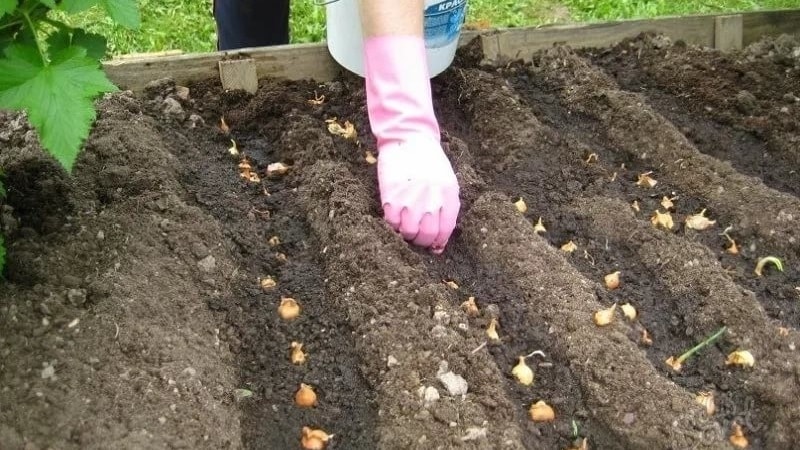
To grow onions, choose a well-lit area without nearby groundwater. Neutral acidity of the soil and light fertile soil - chernozem - are preferred. However, with proper application of fertilizers, sandy loam, loam or peat bogs are also suitable.
Onions are best grown in raised beds. This ensures suitable water and temperature conditions. The soil warms up more efficiently, and sedimentary water does not linger in the soil. Layers of compost and organic mulch further nourish the soil.
When organizing a garden bed, adhere to the rules of crop rotation:
- The optimal predecessors are nightshades (tomatoes, potatoes, eggplant), melons (cucumbers, zucchini, squash, pumpkin), as well as cabbage, spinach and lettuce.
- It is not recommended to plant onions where umbrellas (dill, cumin, parsley, parsnips), root vegetables of the cabbage family (turnips, radishes, radishes) and legumes (beans, peas) were previously grown.
- After growing onions, the soil should rest from the crop for at least 3 years.
It is advisable to prepare the site in advance - in the fall or 1.5-2 months before landings. The earth is dug up, weeded from weeds and fertilizers are applied:
- compost (5 kg/m²);
- in the case of acidic soils - wood ash or dolomite flour (200 ml/m²);
- minerals - ammonium nitrate, superphosphate, potassium sulfate or “Nitroammofoska” in accordance with the instructions (20-30 g/m²).
Fertilizers are applied to a depth of 30-40 cm; for better absorption of nutrients, the soil is watered and then leveled with a rake.
When to plant onions on the head
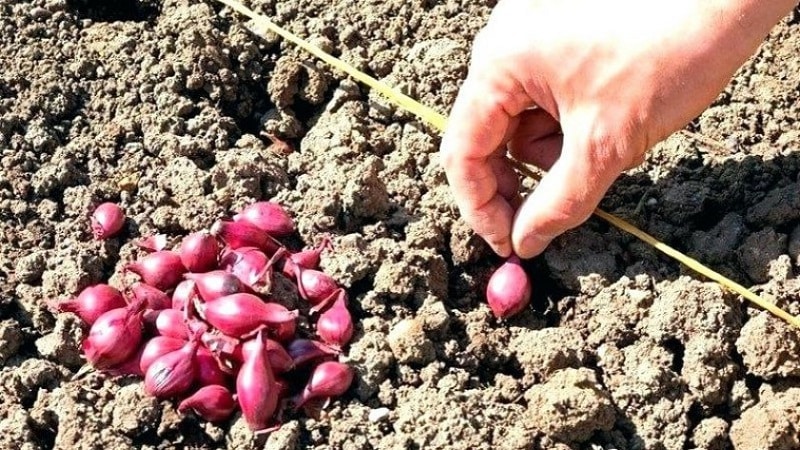
The main condition for successfully growing onions is the optimal temperature when planting. It is desirable that the thermometer stays stable at +12°C, and the soil warms up to at least 10 cm in depth. Although onions are considered a cold-resistant crop, returning spring frosts will lead to bolting, and it will not be possible to harvest a good harvest. If planting time is delayed, this is fraught with a decrease in soil and air humidity, and in such conditions onions develop more slowly.
Reference. According to popular belief, in the middle zone the signal to plant onions is the flowering of violets and brooms.
Specific planting dates depend on the region:
- in central Russia - mid-May;
- in the North-West and Siberia - late May - early June;
- in the Black Earth Region, on the Black Sea coast and the North Caucasus - the first ten days of April.
Which onion to plant on the head in spring
To avoid problems, special attention is paid to the selection of seed material. A quality onion set should be:
- dry;
- dense to the touch;
- evenly colored (dark or white spots are a sign of disease).
The sets are sorted by size: larger specimens (from 22 to 30 mm in diameter) are left for feather production, and small ones (15-21 mm) are ideal for growing onions per head.
Reference. Very small sevok (less than 15 mm) suitable for winter planting. If you sow such onions in the spring, the harvest will be late, which is not acceptable for all regions.
Varieties and hybrids
The varietal characteristics of the seed material are also of great importance. Onion heads must form before the onset of autumn frosts, so for planting in spring it is better to choose early and mid-season varieties and hybrids:
- Centurion F1, Sturon, Red Baron, Golden Semko F1 - early ripening, resistant to bolting and fungal diseases, characterized by high yield and good keeping quality;
- Hercules F1, Carmen MS, Stardust — mid-early, resistant to diseases and bolting;
- mid-season - Shetana, Stuttgarter Riesen, Danilovsky, Odintsovets, Red Semko F1.
Preparation of planting material
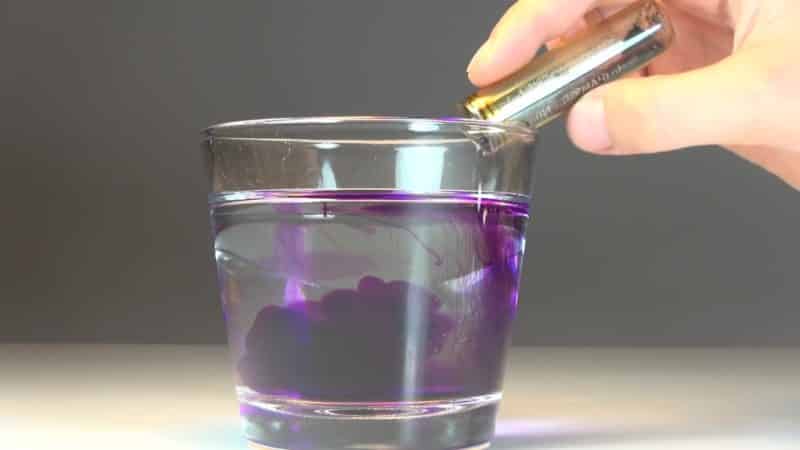
Before planting onions in the spring, preparatory procedures are carried out. They will help avoid bolting and resist the most common diseases.
Warming up
To prevent onions planted in spring from sprouting, the sets are heated. The bulbs are kept at a temperature of +40...+45°C for 8-10 hours. The simplest and most affordable way to warm it up is to scatter the seed material on paper and place it on a radiator.
Disinfection
Soaking onions in a fungicide solution helps kill spores of pathogenic fungi and increase the resistance of sets: "Fitosporina-M", "Planriza", "Gamaira". The preparations are diluted according to the instructions, soaking usually lasts 1-2 hours.
Potassium permanganate (potassium permanganate) and birch tar also have disinfecting properties. When diluting them, it is important not to exceed the dosage - a slightly pink solution of potassium permanganate and no more than 1 tbsp. l. tar per 1 liter of water.
Important! After soaking, the onions are dried.
How to grow onion sets per head: planting diagram and technique
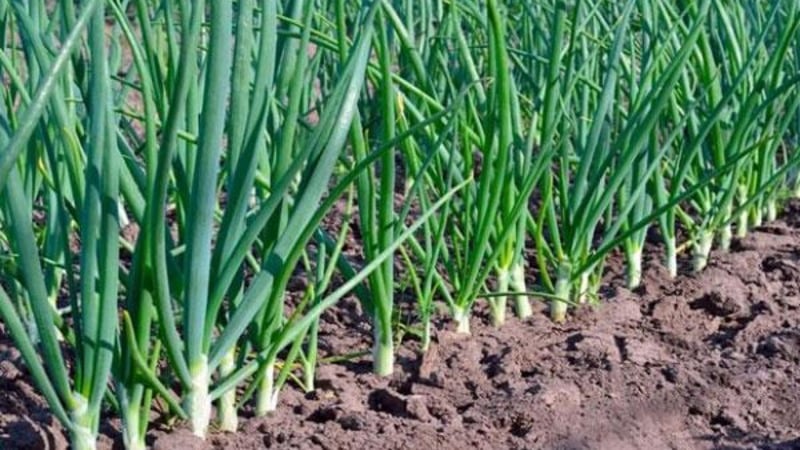
The bulbs are planted at a distance sufficient for their normal development and agricultural work (hilling up, weeding, watering). The recommended planting scheme is rows with an interval of 20-25 cm, in which the bulbs are placed 6-10 cm apart, depending on the size of the set.
The correct planting depth is important: bulbs located too close to the surface will not receive adequate nutrition, and bulbs that are too deep will find it difficult to develop in dense soil. As a rule, the depth of the grooves is 5-7 cm. The bulbs are planted in them, deepened to the shoulders (neck), and then covered with a 2-3 cm layer of earth.
How to grow a head from seeds in one season
Growing onions from seeds is a troublesome task, but it is doable. The key to success is the correct choice of seed material (necessarily early varieties) and its preliminary preparation:
- Seeds are checked for germination by soaking for 15 minutes in hot water (+45...+55°C).
- Harden by placing it in cold water for a few minutes.
- To soften the dense shell of the seeds, they are wrapped in a damp cloth and kept for 24 hours.
- Fill with water at room temperature and place in a cool place for 2-3 days.
- The seeds prepared in this way are dried - they are ready for sowing.
For sowing, choose illuminated areas with well-drained, fertilized soil, the acidity of which is closer to neutral (pH 6.5-7).Before planting, the bed is dug up to the depth of a spade bayonet.
Seeds are sown according to the pattern 45×3-5 cm, planting depth - 1 cm, seeding rate - 1 g/m². To prevent the seedlings from being damaged by possible frosts, the bed is mulched with peat and covered with film.
Reference. The onion varieties Yukont and Zolotisty Semko are suitable for growing heads from seeds. Their growing season is only 90 days. In areas with long and warm summers, the Kaba variety feels good. It takes 120-140 days to ripen.
Growing conditions
With stable heat, the seeds germinate and sprout 7-10 days after planting. After two true leaves appear, they are thinned out, leaving a distance of 2-4 cm between plants. At the phase of 4-5 leaves, thinning is repeated - weak shoots are removed and the gap is increased to 6-8 cm.
Further care for onions consists of loosening the soil, watering and weeding. The harvest is harvested at the end of August, before the onset of heavy rains.
Features of care
Onions are an unpretentious crop, but even they need proper and timely care.
Watering
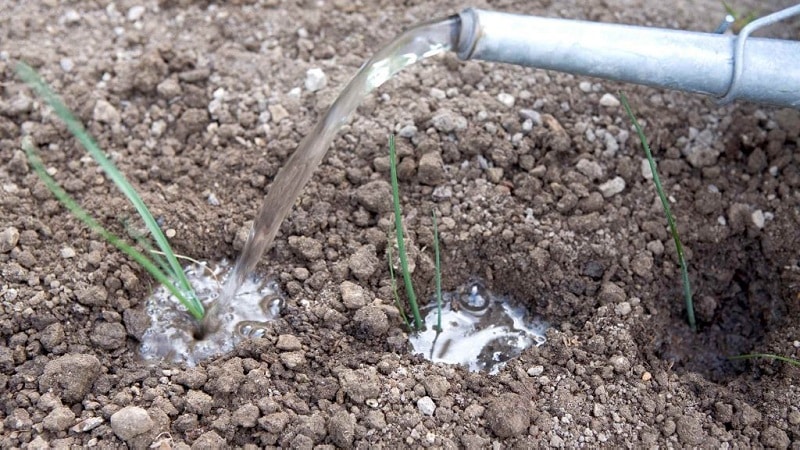
During the active growing season, onions watered 1-2 times a week, focusing on the condition of the soil - it should be moderately moist. As the vegetable matures, watering is reduced to once every 2 weeks to avoid excessive growth of green mass. Watering is stopped 3 weeks before harvest.
Loosening
The soil in the onion bed needs periodic loosening, since the vegetable loves light soil with good air and moisture permeability. Dig up the ground carefully and superficially so as not to damage the plantings. The main thing is to break the formed crust and provide oxygen access to the roots.
Top dressing
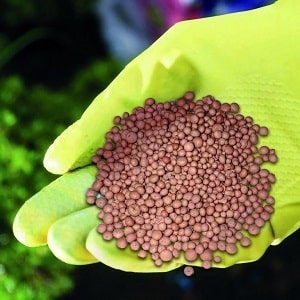
At least two feedings during the growing season are considered mandatory for onions:
- 20-21 days after planting, the plant needs nitrogen fertilizers. Chicken droppings or rotted cow manure are suitable. The organic matter is diluted with water in a ratio of 1:15 or 1:10, respectively, and the bed is watered with the solution at the rate of 10 l/m².
- 3 weeks after the first feeding, mineral fertilizers are applied - 15 g/m² potassium sulfate or ammonium nitrate. Fertilizing is combined with abundant watering.
Subsequent application of fertilizers depends on the condition of the onion. A signal of nutrient deficiency is:
- weak growth - indicates a lack of nitrogen;
- pale feather - the plant needs potassium;
- dryness of the bulb - lack of phosphorus.
The general rule is that at the beginning of the growing season the plant needs nitrogen-phosphorus-potassium fertilizers, and closer to the harvest time - phosphorus-potassium fertilizers.
Pest and disease control
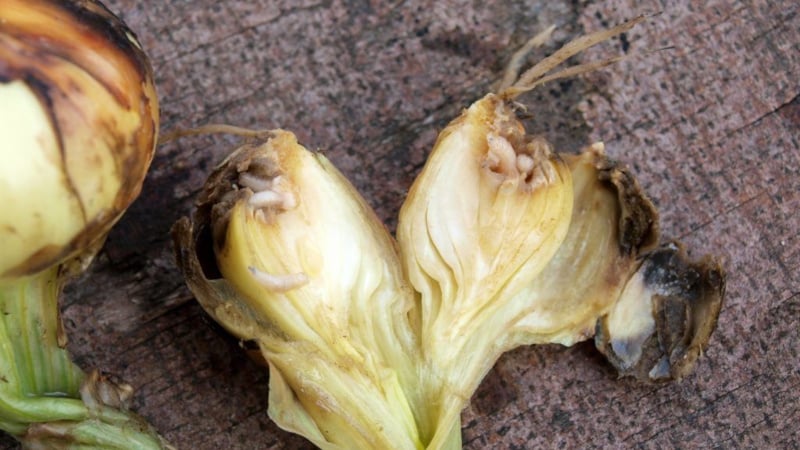
Onions are most susceptible to fungal diseases:
- peronosporosis - light spots on the feathers;
- rust - yellow or orange damage on the above-ground part of the plant;
- fusarium rot - affects the bottom of the turnip, but first appears in the bending and yellowing of the feather.
Typically, the cause of onion disease is waterlogged soil, violation of crop rotation and fertilizer application rates, as well as proximity to vectors and hosts of pathogens. Thus, the rust pathogen persists in fallen leaves and on poplar shoots.
To prevent diseases, a popular folk remedy is used - a solution of 10 liters of water, 1 tsp. copper sulfate and 35 ml of liquid soap. The resulting mixture is sprayed on green onions every 15 days. If the disease does appear, the plants affected by the fungus are isolated, and the bed is treated with fungicides - Bordeaux mixture, Polycarbacin, Iprodione or Quadris.
With insect pests (wire beetles, onion fly and onion weevil) fight with the help of insecticides and agrotechnical techniques: timely weeding, planting carrots in the neighborhood - its smell repels the onion fly.
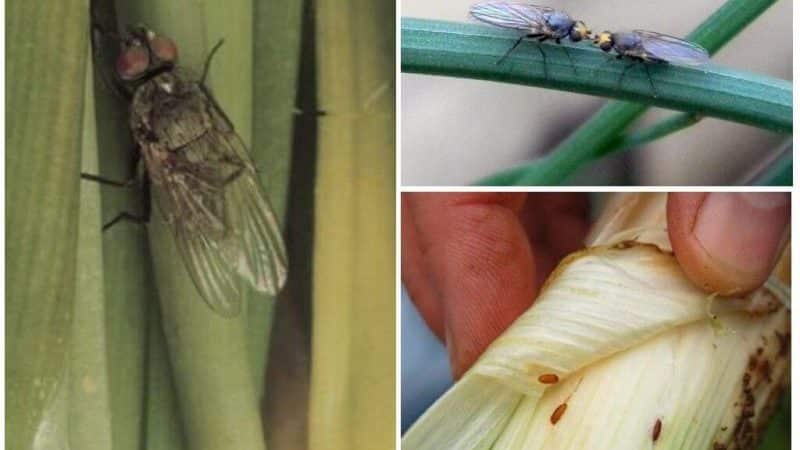
Harvesting
The timing of onion harvesting extends from the end of July to mid-September, depending on the planted variety and the climatic characteristics of the area. A more accurate guide than the calendar is the state of the pen. Signs of harvest readiness:
- the greenery stopped growing, turned yellow, began to dry out and lay down;
- the neck has become thinner and softer;
- when digging, it is clear that the bulb has acquired a color characteristic of the variety.
If the plant is kept in soil that cools at night, the onion will not be stored for long.
The bulbs are pulled out entirely with the tops, and the leaves are cut off when they are completely dry, leaving a tip of 5-10 cm. Turnips need additional drying at a temperature of +25...+30°C for 10-14 days.
Store onions in a warm, dry room, putting them in baskets or hanging them from the ceiling.
Tips and recommendations from experienced gardeners
Experienced gardeners have several secrets in stock on how to grow a good harvest of onions:
- Since the plant does not like stagnant water, ensure good drainage. Before planting, sprinkle the bottom of the furrow with dry sand mixed with ash. This will further deoxidize the soil.
- Sort the seedlings into fractions: the smaller they are, the earlier they can be planted. Small bulbs tolerate frost better.
- Onions are sown in moistened furrows, so be sure to water them before planting.
- Weeds have no place in the garden bed, but if you forget to weed them in time, do not pull out the weeds - this will damage the fragile bulbs. Use scissors to trim off anything that has grown above the onion feather.
Conclusion
Growing onions for turnips is not difficult; The main thing is not to miss the optimal planting time and provide the plants with proper care. In order not to delay harvesting, it is better to choose early-ripening varieties whose growing season falls within the summer season of the region.